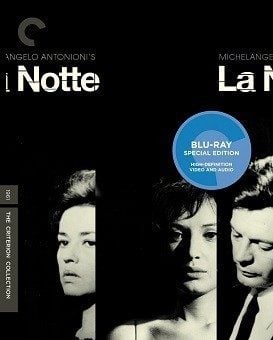After his haunting if enigmatic L’avventura won international acclaim, director Michelangelo Antonioni next tackled La Notte, but the results were far more pedestrian and banal. Shot with the maestro’s patented mesmerizing visuals in a languid style and with minimal dialogue, La Notte’s look at a deteriorating marriage between two individuals who have pretty much stopped caring about anything in their world just never works up enough heat to inspire much interest. The director paints with his camera, but the results won't speak to all viewers.

Studio: Criterion
Distributed By: N/A
Video Resolution and Encode: 1080P/AVC
Aspect Ratio: 1.85:1
Audio: Other
Subtitles: English
Rating: Not Rated
Run Time: 2 Hr. 02 Min.
Package Includes: Blu-ray
keep caseDisc Type: BD50 (dual layer)
Region: A
Release Date: 10/29/2013
MSRP: $39.95
The Production Rating: 2.5/5
Video Rating: 4.5/5 3D Rating: NA
Audio Rating: 3.5/5
Special Features Rating: 3/5
Overall Rating: 3/5
Reviewed By: Matt Hough
Support HTF when you buy this title:





